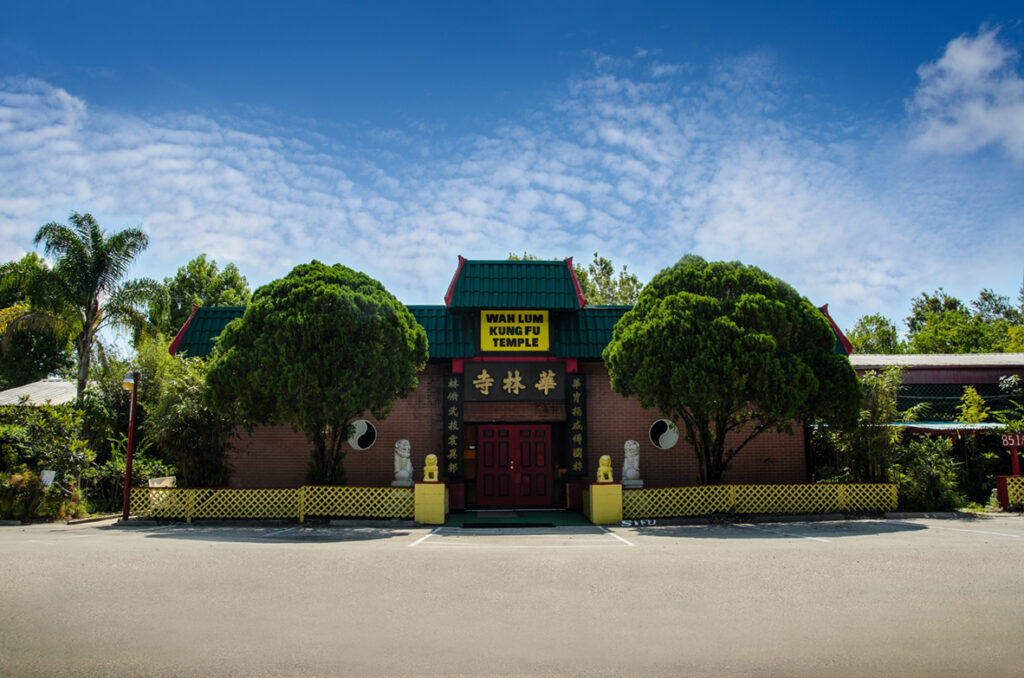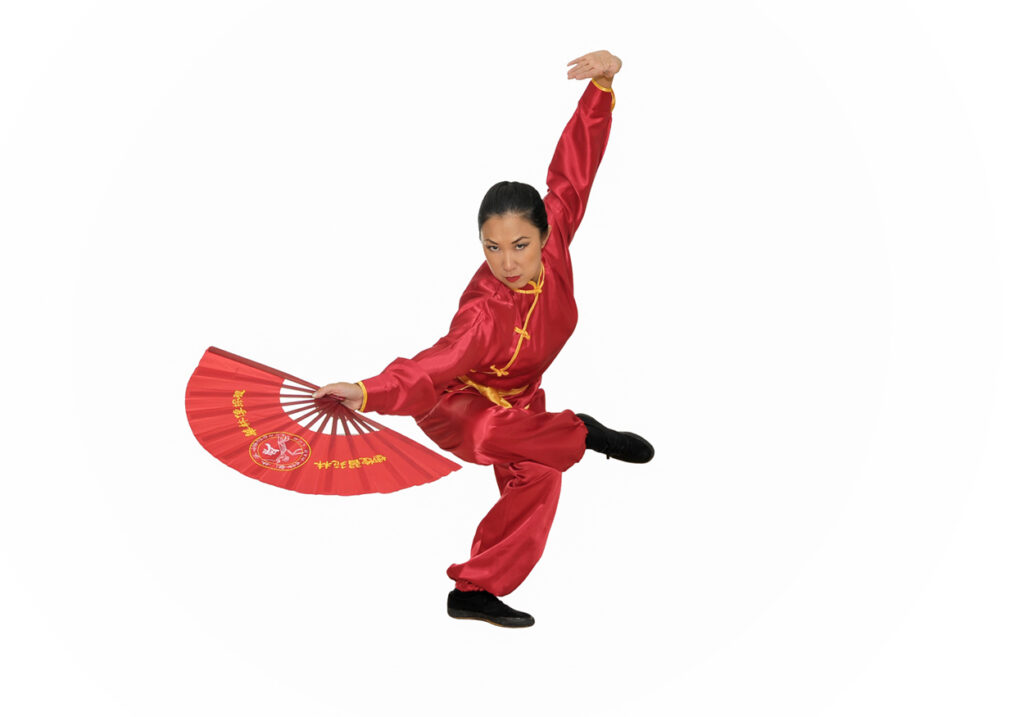By Justine Truc, 2024 University of South Carolina Oral History Fellow
The metro Orlando area is often recognized for its theme parks and sunny weather, but it’s also a rich cultural melting pot. In an oral history with the Orange County Regional History Center, Mimi Chan offered a fascinating glimpse into this cultural landscape, highlighting her family’s distinctive contributions to Orlando’s evolving identity through their passion for martial arts. From building the nation’s first kung fu temple to inspiring the animators who created the 1998 Disney movie Mulan, the Chan family made an indelible mark on Central Florida. We begin with a history of kung fu and the Wah Lum Temple. (Mimi Chan’s oral history was recorded on August 23, 2019.)

The Wah Lum Temple: Orlando’s Kung Fu Haven
Kung fu, a diverse martial art tradition, has a history stretching back thousands of years. Rooted in Chinese culture, it is characterized by its wide range of techniques, including strikes, kicks, and open-hand maneuvers. Kung fu distinguished itself from other martial arts by its emphasis on fluidity, balance, and the integration of philosophy and morality into practice.
As Chinese immigrants began moving to Western countries in the 19th and 20th centuries, kung fu spread globally, becoming a symbol of cultural pride. In recent decades, martial arts icons such as Bruce Lee and Jackie Chan have slowly brought kung fu to global audiences.
Located on North Goldenrod Road in Orlando, the Wah Lum Temple, established by Grandmaster Pui Chan in 1980, is the first kung fu temple ever built in the United States. Originally from southern China, Grandmaster Chan founded this temple to serve as both a training center for kung fu practitioners worldwide and the headquarters for the international Wah Lum Kung Fu organization. Well established in the Orlando community, the Wah Lum Temple has been celebrating Chinese traditions and promoting cultural exchange for more than 40 years.
 Mimi Chan: Heritage Keeper
Mimi Chan: Heritage Keeper
Mimi Chan was born in Boston in 1978, into a culturally diverse household. Her environment was anything but ordinary, with a Chinese Jamaican singer for a mother and a Chinese martial artist for a father. In 1980, her parents moved to Orlando, seeking a better life and warmer climate.
Growing up with immigrant parents, she experienced the complexities of belonging to a diverse yet sometimes isolating community. She felt that while “the Asian community isn’t as discriminated against as perhaps a lot of other communities here in the U.S., . . . there’s still that experience of you not looking or feeling like everyone else.”
Immersing herself in her father’s kung fu Temple shaped her identity and helped Mimi Chan navigate these challenges. From a young age, she took kung fu classes. “I grew up around a kung fu school,” she recalls. “Every day after school, I would come to the Wah Lum Temple, and I would just be here until classes were over because both of my parents were working.”
At 16, Mimi Chan had a breakthrough as she recognized the importance of connecting with her cultural heritage more deeply. She began taking Mandarin classes and realized that “people from all over the world were literally coming here to learn from my father,” as highlighted by an international tournament her family organized in 2000 at the University of Central Florida, which drew over 1,000 competitors.
The Chan family’s presence in Central Florida has enriched the area’s cultural scene. Since 1980, they have brought Chinese New Year celebrations to Orlando, introducing the city to their traditions. “We’ve performed Chinese New Year since 1980 here in Orlando. We were the first group to start that culture and tradition,” Mimi Chan notes in her oral history.
The family’s impact also extended to Disney World. Their strong connection with Disney paved the way for exciting collaborations. “We have a very close relationship with Disney,” Mimi Chan says, hinting at ventures where her martial arts skills were put to the test.
When Disney Meets Wah Lum
In 1982, the China Pavilion opened at Epcot, and the Lion Dance Team from the Wah Lum Temple performed at the grand opening. The team continued to dazzle audiences at Disney World. Every year during the holidays, they performed at Epcot, Mimi Chan recalls. “From November to the end of December, we do seven days a week, five or six shows a day there.”
The Chan family’s connection with Disney grew deeper as their martial arts skills caught the attention of Disney animators in the 1990s. When Mimi Chan and her team showcased tai chi for the 1998 animated film Mulan, it led to an unexpected opportunity. “Long story short, someone saw me and said you need to meet Mark Henn, who is the lead animator for Mulan and many Disney princesses,” she recounts.
Henn was impressed by her skills and asked her to choregraph action sequences for the movie, making her a real-life Mulan. Her contributions significantly influenced the animation of Mulan’s martial arts scenes. To this day, Mimi Chan is known as the inspiration behind Mulan; Henn remarked that when they first met, “it’s like Mulan walked in the room.”
Following her work on Mulan, she ventured into stunt work, driven by the excitement around Mortal Kombat’s local auditions. “I was even able to get my SAG card through that,” she notes, marking the start of her stunt career. She briefly moved to Los Angeles to pursue this path but quickly moved back to the city that had shaped her early life. “I missed Orlando,” she says.
Today, Mimi Chan is deeply involved at the Wah Lum Temple, dedicating herself to preserving and teaching kung fu. In 2011, she produced a documentary, Pui Chan: Kung Fu Pioneer, about her father’s legacy. She also hosts a podcast, continuing to share her passion for martial arts and her cultural heritage.

